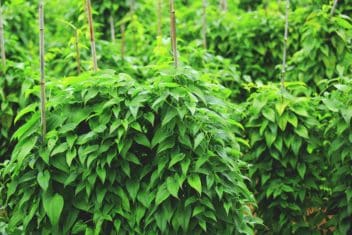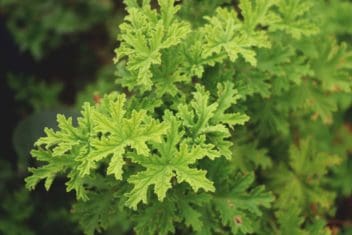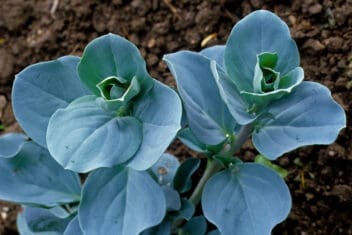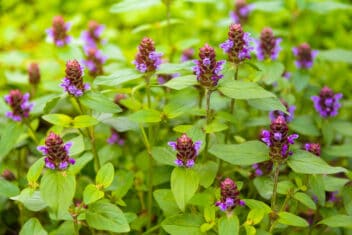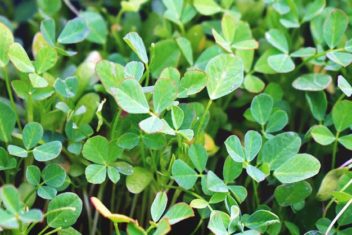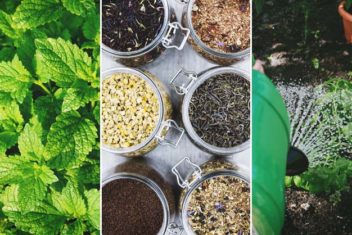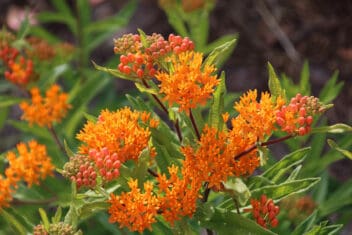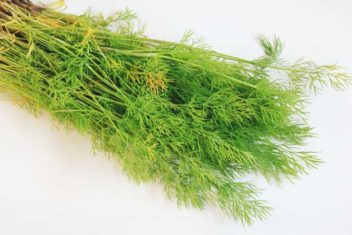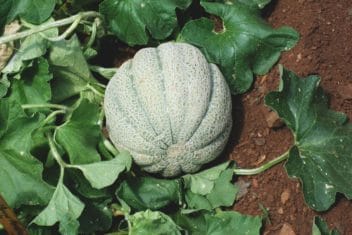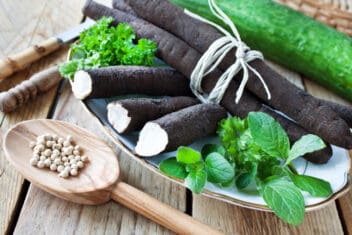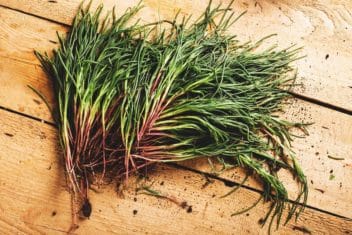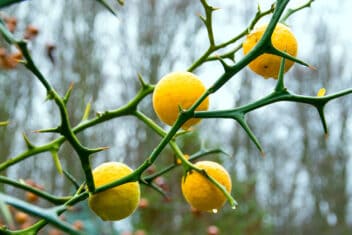You can find juniper shrubs across the world in arid regions and home gardens, where they provide a beautiful addition to the landscape. Not only are these fragrant shrubs easy to care for, but their berries are edible and medicinal. If you’re interested in growing junipers, you’ll need to know a few things to make them thrive.
Fortunately, these plants are extremely easy to raise, provided you give them the right conditions.
Are you looking to add juniper berries to your kitchen pantry? Or, do you want to plant a reliable evergreen shrub? Follow these steps and you’ll be harvesting berries and enjoying the display in no time.

Best Juniper Varieties
Can you believe that there are nearly 60 species of juniper shrubs (Juniperus spp.)? Well, there are! But, to keep it simple here are the most common 16 species in North America. Many of these grow wild, while others are primarily cultivated in gardens.
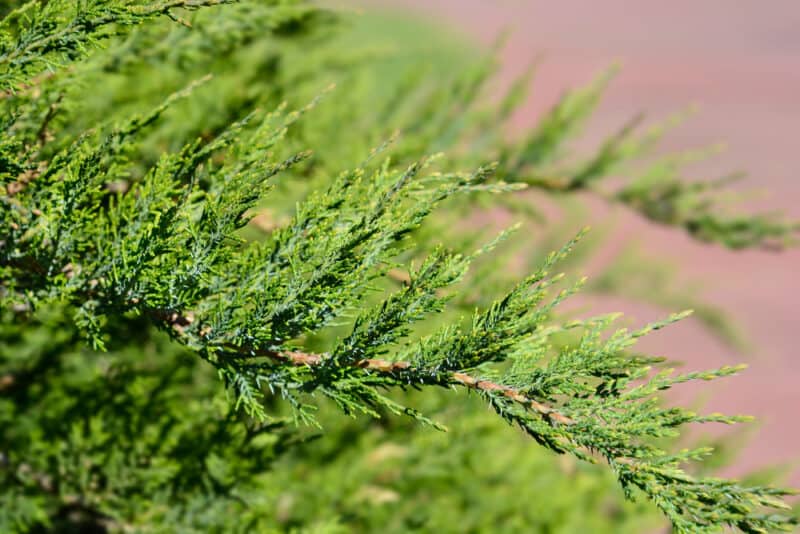
When you’re deciding on the type of juniper to start growing, there are several things you should consider. For example, will you be using it on a landscape or border? Or, will it be kept on a hillside or slope? Depending on your location, you might want to pick a groundcover type or a columnar type.
- Juniperus horizontalis
- Juniperus squamata
- Juniperus X pfitzeriana
- Juniperus conferta
- Juniperus communis
- Juniperus cedrus
- Juniperus deppeana
- Juniperus californica
- Juniperus chinensis
- Juniperus horizontalis
- Juniperus flaccida
- Juniperus virginiana
- Juniperus exelsa
- Juniperus monosperma
- Juniperus scopulorum
- Juniperus osteosperma
There are some exceptional cultivars out there. For instance, J. squamata ‘Blue Star’ is the most popular one out there, and for good reason. It’s reliable, compact, disease-resistant, hardy, and extremely beautiful with its steel blue foliage.
J. horizontalis ‘Blue Chip’ is a creeping cultivar with dusty blue leaves. J. squamata ‘Floreant’ has stunning foliage in bright yellow and sage green.
Looking for something taller? J. communis ‘Oblonga Pendula’ has a graceful, weeping form and grows up to eight feet tall.
J. horizontalis ‘Bar Harbor’ provides extra interest in the winter as the blue-gray foliage transitions to purple. Then there’s J. chinensis sargentii ‘Viridis,’ which has an extremely dense growth habit and works exceptionally well as a groundcover that will smother out any weeds.
Planting Juniper
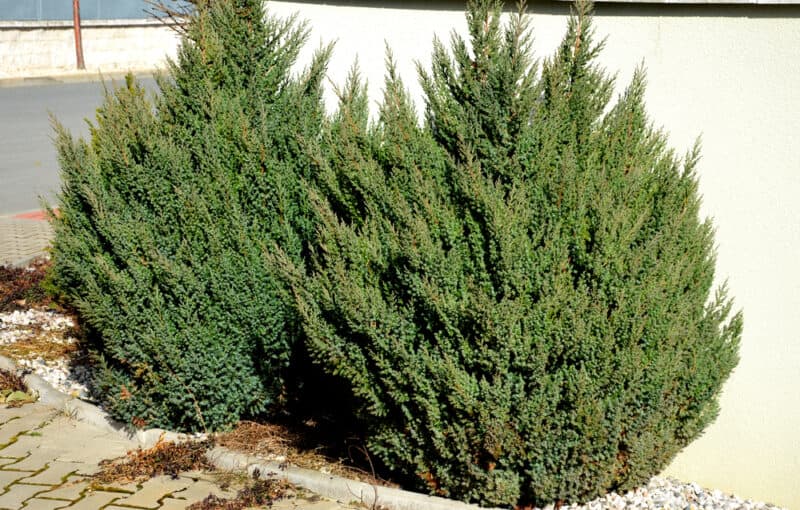
Plant your shrub in either spring or autumn. While junipers thrive in extreme heat and cold, it’s best to plant them during the milder weather to give them a chance to become established before the harsh weather arrives.
Make sure the soil is right for growing junipers. Even though junipers are tolerant of most soil, they prefer soil that is acidic and has good drainage. This is because roots can rot in too much water.
In fact, one of the quickest ways to kill a juniper is by planting them in poorly draining soil. They can handle quite a bit of abuse, but not that.
You should also make sure that the area has enough sunlight so your juniper shrub has the best chance of growing. They do best in full sun but can handle partial shade. Plants in more shade than that will be leggy and prone to fungal issues.
Now it’s time to put the shrub in the ground. Here are the steps:
- Once you’ve chosen an area for your juniper shrub then you will have to create a hole. This should be about twice as wide as the rootball.
- Remove the plant from its container and loosen the roots.
- Place the plant in the hole.
- Finally, all you need to do is fill the hole with soil and press down lightly to remove any air holes. However, don’t compact the soil around the root ball as it needs air circulation. Providing enough air will help prevent any fungal diseases.
You can grow juniper from seed, but note that hybrids won’t grow true to type, you must cold stratify the seeds for months and germination rates are extremely low. Try air layering or growing cuttings if you want to propagate a plant.
Caring for Juniper
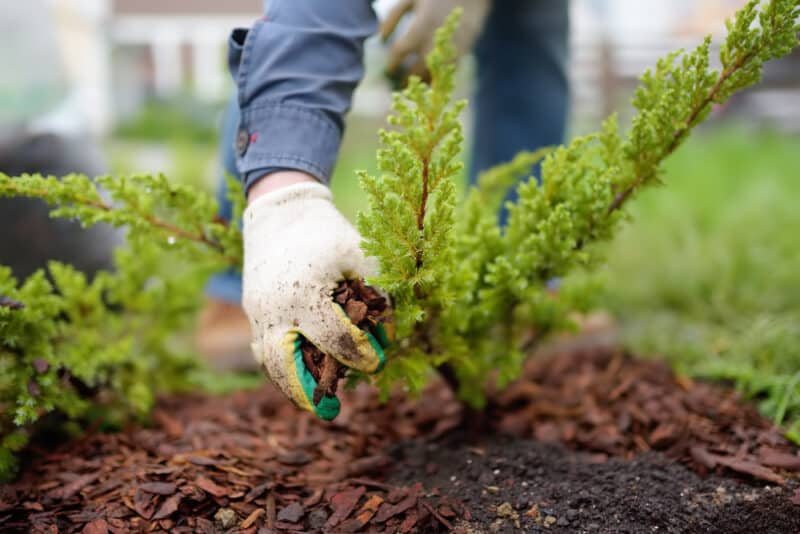
Every plant needs water, right? Juniper is no exception, but this plant only needs little supplemental or no watering if you live in a climate that experiences regular downfall. In fact, overwatering is one of the main reasons that juniper shrubs develop diseases. Think about the environment you see junipers growing in naturally. It’s usually dry and arid, with regular drought conditions.
Don’t give the plant water unless the top three inches of soil are completely dry. These plants have deep taproots and they’ll find their own water in the ground, for the most part. You might only need to add water during the summer.
However, when you first plant juniper, you should water the shrub every two weeks or so depending on if the soil is dry or not. This is important during the growing process as the roots will take a while to develop. After the first few years, you can reduce watering.
Similar to water, juniper plants don’t need a lot of extra support in terms of fertilizer. However, if you do use fertilizer on your plant then you should only use slow-release fertilizer and it should be applied in early spring.
Apply mulch around the plant to help suppress weeds and to help the soil retain water.
Juniper Diseases and Pests
Some of the most common problems that may trouble you while growing junipers are spider mites, bagworms, and bark beetles. Plants that are stressed are more susceptible to problems. Most issues are mostly caused by overly watered soil, too much shade, and insufficient air circulation.
Spider Mites
Spruce spider mites (Oligonychus ununguis) are probably the most problematic pest you’ll encounter when growing junipers. Similar to other species of spider mites, they pierce the plant with their mouthparts and suck out the sap. This weakens the plant and, if there are enough of them feeding, it can kill it. You may also see yellowing needles and fine webbing on the plant.
Ladybugs are natural predators, so introduce them if you don’t naturally have healthy populations. Don’t bother with insecticides. The mites just adapt and chemicals hurt beneficial bugs, as well. Head to our guide to learn how to handle spider mites.
Bagworms
Bagworms (Thyridopteryx ephemeraeformis) are little caterpillars that feed on junipers, causing the leaves to drop and the plants to be stunted. If there are enough of them present, it can even kill the plant.
These little pests live in small bags (hence the name), so if you see these on your juniper, pick them off and plop them in soapy water. You can also use a product that contains Bacillus thuringiensis.
Bark Beetles
Juniper bark beetles (Phloeosinus serratus) have devastated forests in the western US. They thrive in conditions where trees are stressed, such as drought. Because much of the west has experienced prolonged drought, these beetles have been able to gain a foothold.
At first, you’ll see yellowing foliage, and wilting. Then you’ll see needle drop and the plants die.
There is no way to get rid of them except to cut down the shrub and dispose of it.
Root Rot
If you overwater your junipers or if you try growing them in heavy, poor draining soil, chances are you’ll end up with root rot. This happens when the roots can’t access oxygen because there’s just too much water around the roots. The solution is to improve drainage and/or reduce the amount of water you’re giving.
Cedar Apple Rust
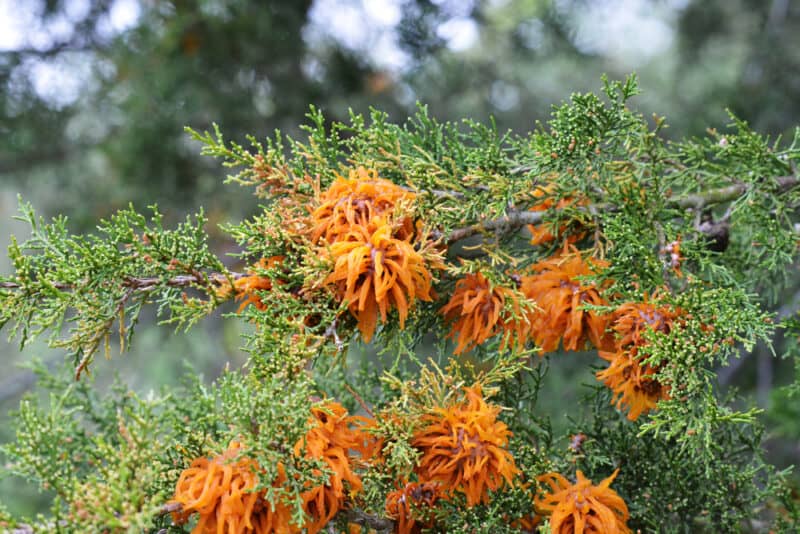
Juniper shrubs can suffer from cedar-apple rust which is a fungus that harms both junipers and apple trees. Juniper trees start growing witches brooms and hard galls. It won’t kill the plant, but it can be ugly and it does cause problems on apples. Just prune away any galls or witch’s brooms and don’t plant junipers or cedars within 100 yards of apple trees.
Using Juniper Berries
Juniper berries have a distinct spicy, pine-like, resinous, flavor. You might be familiar with the flavor from gin, which is made using young juniper berries. The berries aren’t actually berries, but modified cones, and they come in various colors but most are deep blue.
If you’re looking for an extra source of vitamin C then juniper berries might be a good option. Everyone needs vitamin C to develop healthy immune systems, collagen synthesis, and blood vessel function.
Even though you can buy the berry in stores, it doesn’t compare to growing juniper shrub yourself and harvesting the berries.
There’s a great feeling of satisfaction when you succeed at growing junipers and then get to enjoy the tasty benefits it brings to your home.
When and How to Harvest
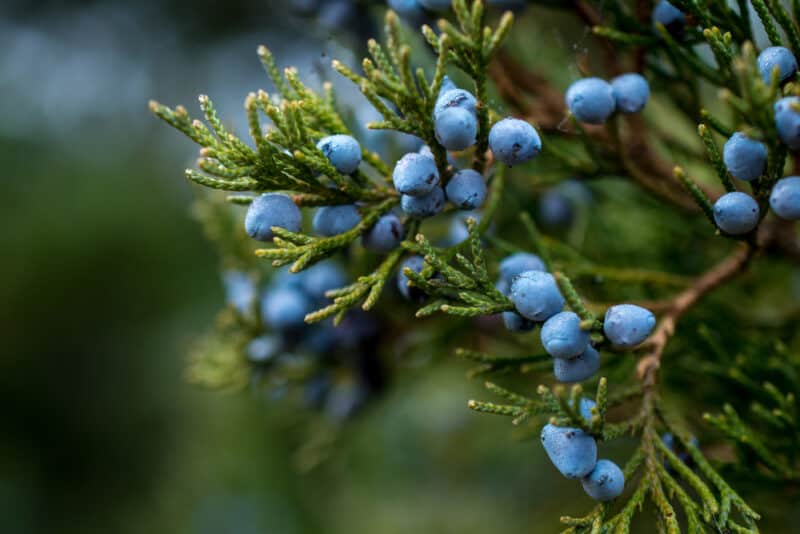
Juniper plants can have mature and immature cones on the plant at the same time, so you can’t go by the time of year to judge when to harvest. Fall is when the berries ripen in most areas, however, so be on the lookout. The cones should feel plump and have a slight give. They should also be their mature color. Green or firm berries are underripe.
To harvest, pluck individual berries using your fingers. They should come off the plant easily. You might want to wear gloves because the needles can be sharp.
Medicine
As well as being used in spice and flavoring agents, native people use juniper berries medicinally, and they’ve become popular with other cultures, as well. Juniper berries and juniper essential oil have been used in medicine since ancient times.
You can use juniper to treat stomach issues such as intestinal gas, heartburn, bloating, loss of appetite, as well as, urinary tract infections and kidney/bladder stones. You can also use juniper on wounds and for joint pain or to treat bronchitis and to numb pain.
Antioxidants are vital to protect your cells from damage and to protect you from certain illnesses, and junipers are full of them.
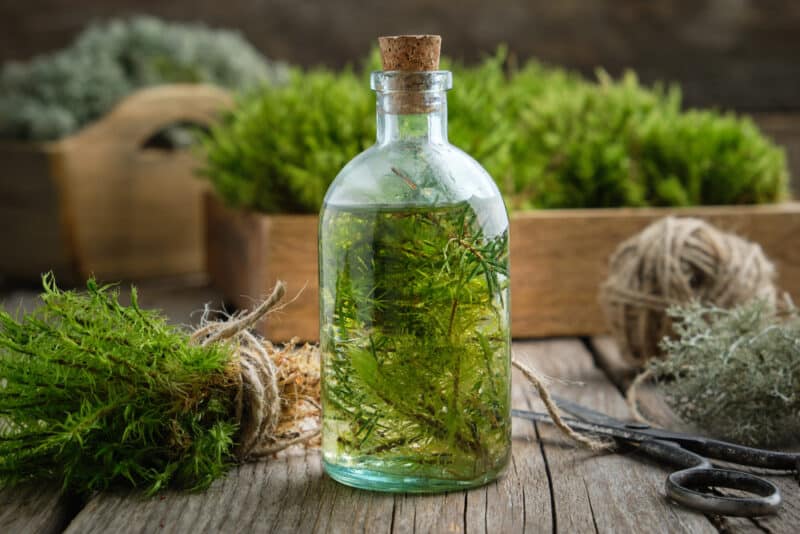
Juniper has been shown to have the potential to decrease cholesterol levels and high triglycerides. So, eating these nutritious berries could help keep your heart healthy and strong! They may also be able to help you regulate your blood sugar levels.
Juniper is antibacterial and antifungal. Pretty impressive list, right?
Food
If you’ve never used juniper as a flavoring agent in cocktails, meals, and other beverages, get on it! Try a gin and tonic with juniper berries as a garnish. The next time you have friends over you can introduce them to juniper berries straight off your bush.
The cones are also commonly used in making lox and in many different Scandinavian dishes. They’re especially popular as a meat marinade. Don’t stop there, though. You can add them to desserts, yogurt, soup, the sky is the limit. Try experimenting.
Cosmetics and Household Goods
You can find juniper in cosmetics like soaps, lipstick, and lotion. It’s heavenly in candles and dried in potpourri.
Enjoy!
Use Caution
You should never use immature berries in food or medicine, and don’t use the berries from J. sabina and J. oxycedrus. These species are poisonous. You should also use caution if you are pregnant or nursing. Talk to your doctor before using any new medication.

